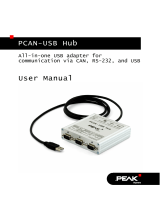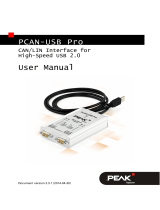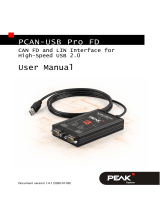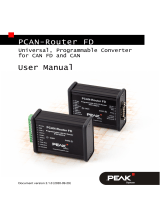
PCAN-USB (ISO) – User Manual
As a rule you can use the preset values and confirm the dialog box
directly.
If you need further help after the program start, use the online help
provided with the program (key [F1]).
4.2 Linking Own Programs with PCAN-Light
On the supplied CD-ROM you can find files that are provided for
software development. You can access them with the navigation
program (button Programming). The files exclusively serve the
linking of own programs to hardware by PEAK-System with the help
of the installed device driver under Windows.
Further more the CD-ROM contains header files and examples for
creating own applications in conjunction with the Light drivers.
Please read the detailed documentation of the interface (API) in
each header file.
Tip: You can find further information in the file
PCANLight_enu.chm (Windows Help file) on the CD-ROM.
Notes about the License
Device drivers, the interface DLL and further files needed for linking
are property of the PEAK-System Technik GmbH (PEAK-System)
and may be used only in connection with a hardware component
purchased from PEAK-System or one of its partners. If a CAN
hardware component of third party suppliers should be compatible
to one of PEAK-System, then you are not allowed to use or to pass
on the driver software of PEAK-System.
PEAK-System assumes no liability and no support for the PCAN-
Light driver software and the necessary interface files. If third party
suppliers develop software based on the PCAN Light driver and
problems occur during use of this software, please, consult the
13



























